What It's Really Like to Attend Royal Ascot
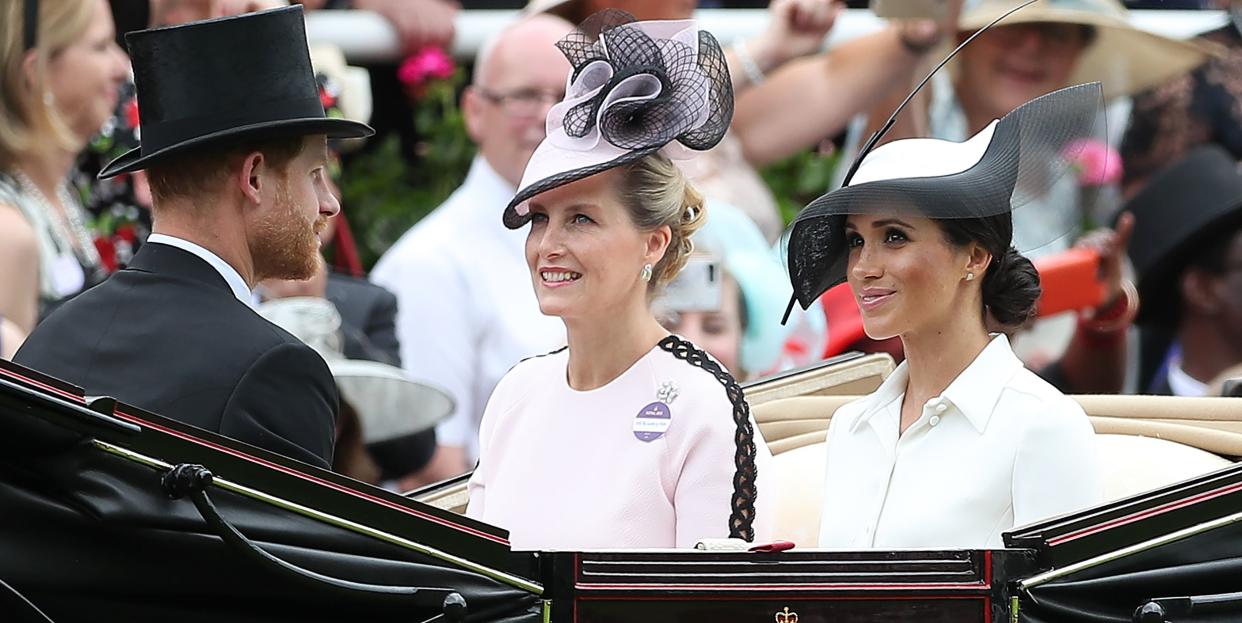
In honor of Opening Day at Royal Ascot, we're resurfacing this story from 2018 about what it's really like to attend. Here, read about Royal Ascot's history, and what the event looked like in prior years. While the Queen is not expected at the first day of the races this year, keep your fingers crossed she will attend later on in the event.
The Royal Ascot certainly lives up to its official motto,“Like nowhere else.” A major event on the British social calendar since its founding by Queen Anne in 1711, the annual race meeting, which occurs each June at the Ascot Racecourse in Berkshire, England, remains a heady mix of pomp, tradition, fashion, class distinction and, of course, sport.
Officially opened each day by the Queen, along with assorted royals, the most apt way to describe the experience to Americans would be to imagine a cross between a royal wedding and the Kentucky Derby, except boozier, if that’s humanly possible (via champagne rather than bourbon).
Though each of the five days has its highlights, Opening Day remains special simply because it attracts a full complement of royals while also limiting admission to the Royal Enclosure, the most prestigious level of attendance, to members only.
How does one become a member of this posh pack? The answer is purposely left vague, involving a secret recipe of social stature, connections, letters of reference, and, above all, ambition. On the remaining four days, members are permitted to purchase two guest badges each per day.
Ascot Opening Day was immortalized by the Lerner and Loewe musical, “My Fair Lady,” which opened on Broadway in 1956 starring Rex Harrison and Julie Andrews, and later made into a big-budget Hollywood extravaganza, again with Rex Harrison but with Audrey Hepburn replacing Andrews. (It's currently running on Broadway at Lincoln Center Theater.)
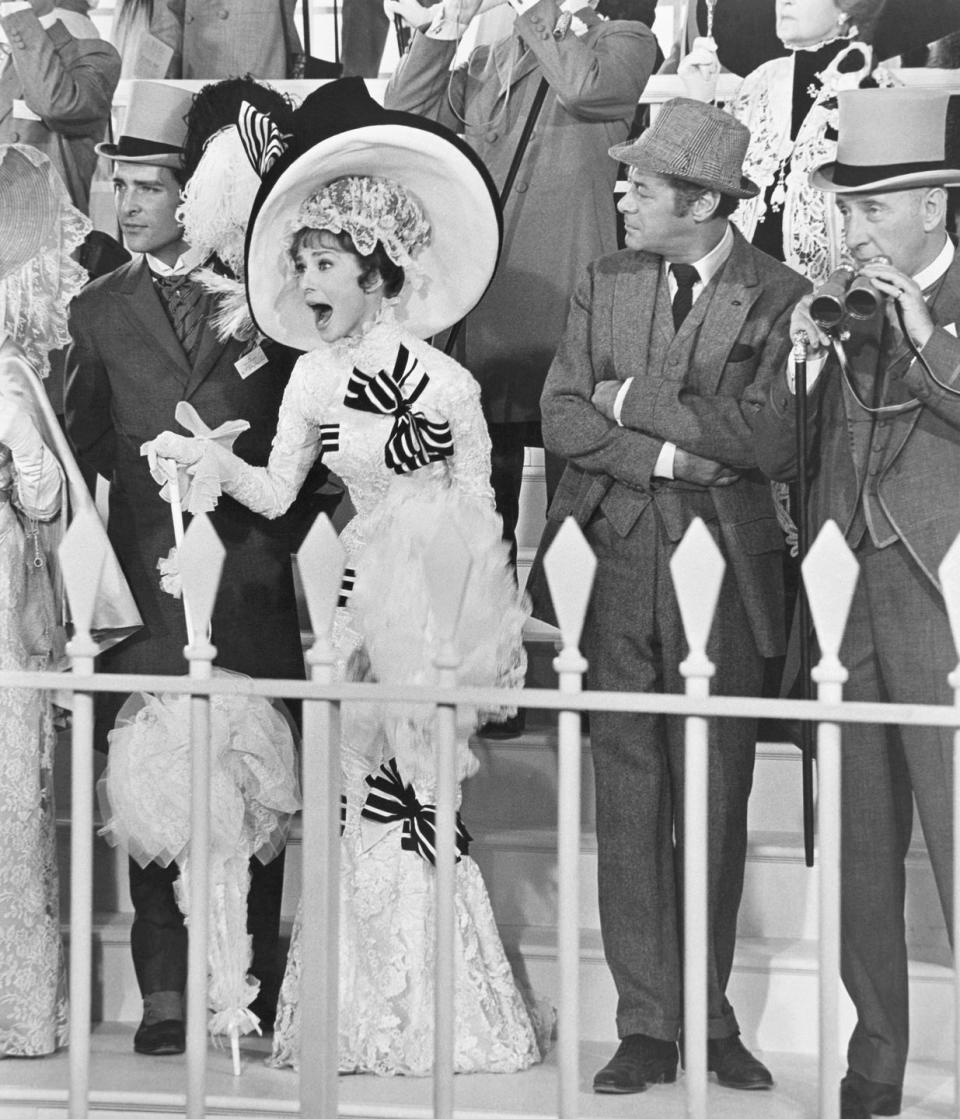
Both the stage production and the film featured spectacular depictions of Royal Ascot with sets and costumes by Cecil Beaton, the iconic photographer, designer, diarist and royal elbow-rubber. Intensely designed in black and white, the number, especially in the film version, practically stands on its own as a capsule of choreography and couture.
Today, Ascot Opening Day is a far less mannerist affair, but equally fashion-aligned. In the rarified air of the Royal Enclosure, tradition reigns supreme in all manners of dress throughout the five-day period.
Men are required to wear a full morning suit with waistcoat and either a black or grey top hat at all times. Only black shoes are allowed and in an affront to the current vogue for bare ankles, socks are mandatory.
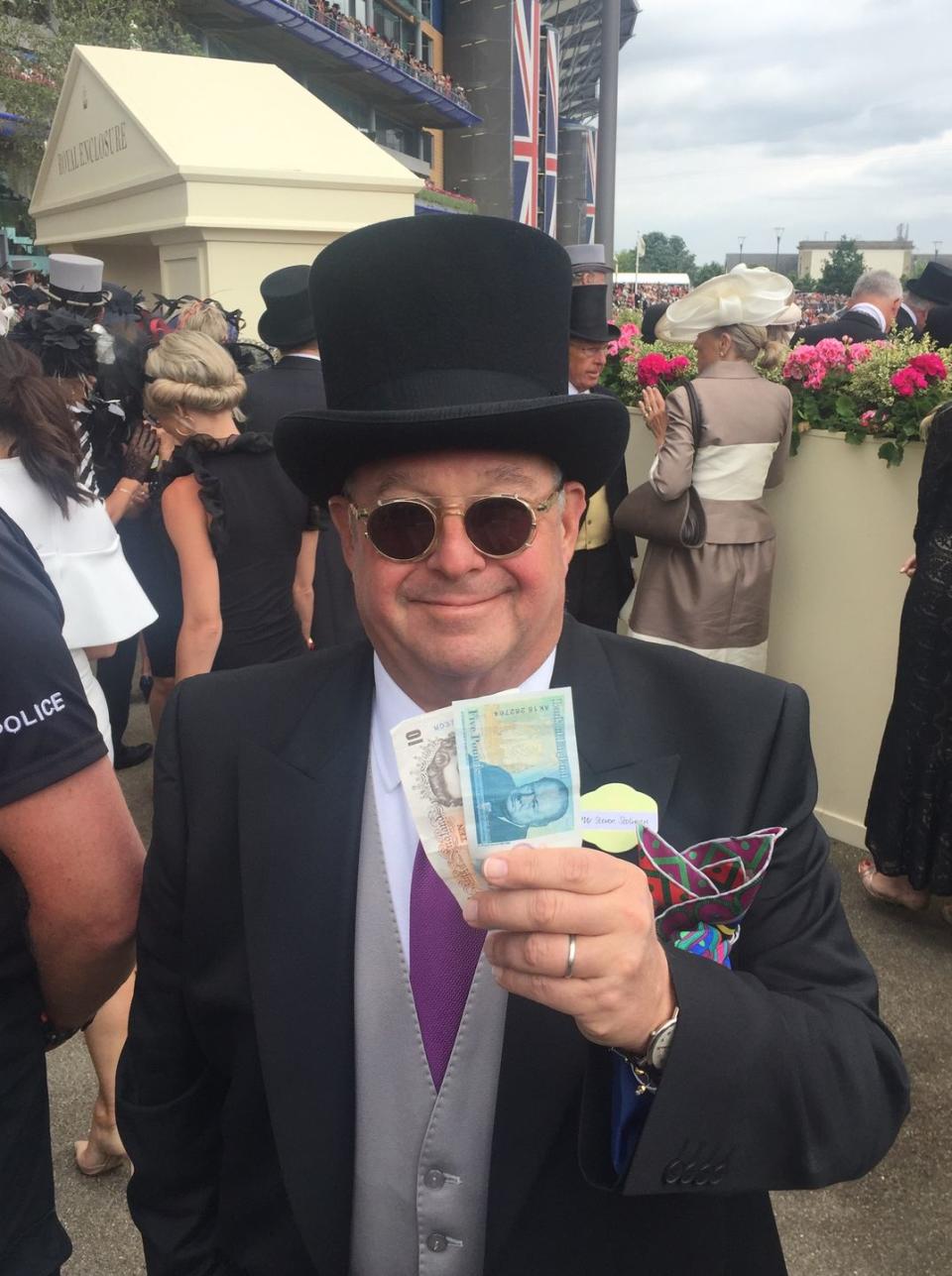
Only last year, for the very first time in Royal Ascot’s history, when the temperature soared into the 90s, were men allowed to remove their coats and hats. Otherwise, hats must remain on heads except within a restaurant, a private box, an enclosed terrace, and a few other designated areas.
Ladies must wear a hat with a minimum base of four inches (i.e. no fascinators) and dresses with a modest cut. Trousers and jumpsuits are allowed, but again with a caveat: trousers must be worn with a jacket or top “in a matching fabric.” There is a wide range of chic to cheeky, but Brits do the “garden party” look quite well, with a mix of bright colors, floral prints and the recent appearance of long, flowing dresses that obviously take their cures from the younger members of the Royal Family.
Beyond the Royal Enclosure, each section has its own set of sartorial guidelines. If the Royal Enclosure is First Class, Business Class would be the Queen Anne Enclosure. There, men must wear a suit and tie and women are asked to wear tasteful dresses and a hat. Premium Economy would be The Village Enclosure, with the same dress code as the Queen Anne Enclosure. The Windsor Enclosure is the most relaxed, with no dress code at all. The official website says “vibrant, exciting and fun” which translates to party central, sometimes rather rowdy.
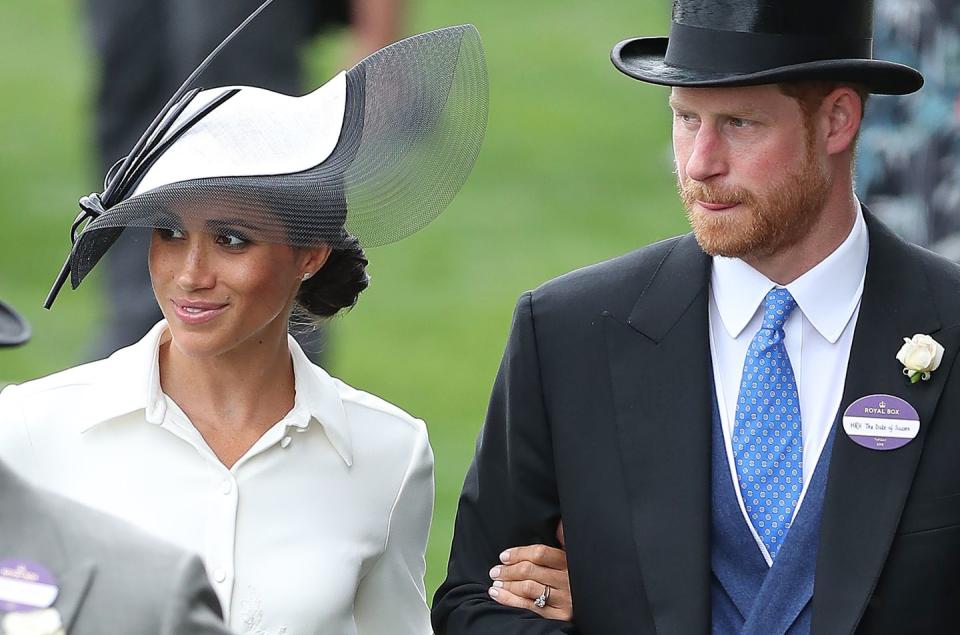
Indeed, every level of Royal Ascot is party hearty, regardless of whether fueled by Bollinger, Pimm’s, or Guinness. The numbers speak volumes. Over the course of five days, 300,000 attendees will have consumed 56,000 bottles of champagne, 44,000 bottles of wine, 21,000 jugs of Pimm’s and 60,000 finger sandwiches. For those who do not imbibe, fear not. Also consumed are 80,000 cups of tea and 128,500 bottles of mineral water.
No matter which section one is in or what is in one’s glass, the mood is decidedly buoyant, ignited by the arrival of the Queen and various members of her family in a line of horse drawn carriages. This year, as usual, the Royal Procession entered the park through the Royal Gates visible to all off in the distance. The closer the carriages got to the stands, the louder the buzz from the crowd. Simultaneously, the Band of Her Majesty’s Irish Guards marched into place to play the national anthem, “God Save the Queen.” Thousands of top hats were removed en masse and the crowd sang, followed by spontaneous applause and cheers that grew into a cacophony as the Queen’s carriage passed, accompanied by nonstop “Hip, Hip, Hoorays!”
Resplendent in a jonquil yellow coat and hat, she was accompanied by her son, Andrew, daughter Anne, and Lord Vestey, Master of the Horse to the Royal Household. Next came Prince Charles with Camilla, Duchess of Cornwall and the Princesses Beatrice and Eugenie. But the loudest cheers this go round were for the occupants of the third carriage, Prince Harry and his new bride Meghan with Prince Edward and his wife, Sophie.
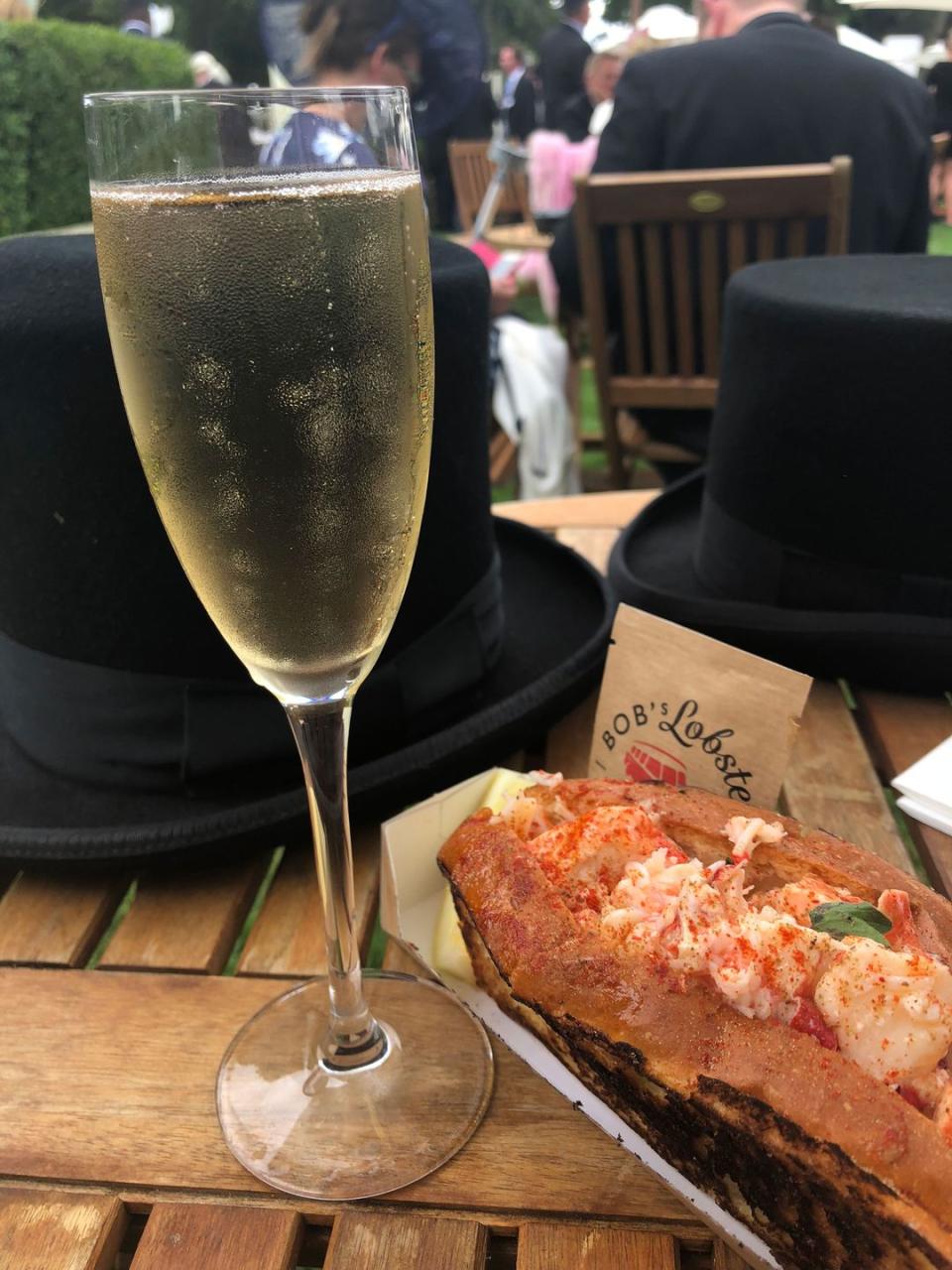
Following the royal arrival, just like halftime at a football game, there’s a mad rush for the bars and the restrooms. But instead of beers and brats, it’s Bollinger and lobster rolls. Yes, there are a few thrilling horse races, accompanied by a tremendous amount of drinking. But the real show is in the garden of the Royal Enclosure, which turns into one big party, and, of course, the Royal Box, which hovers over the stands like the bridge of a massive ocean liner.
One can easily see the comings and goings through its set of double doors, with riding crop handles, from several vantage points within the clubhouse, which feels exactly like a shopping mall, although it has bars and betting stations instead of boutiques.
One can seemingly make a bet pretty much anywhere. In addition to the stationary desks, there are mobile kiosks scattered inside the clubhouse and throughout the park. One can even place a bet, albeit prior to 2 p.m. on what color the Queen will wear. (Last year, I won £15 on pink.) And if one is in the right place at the right time, the doors to the Royal Box will swing open and a tiny little figure in a brightly colored coat and hat will emerge, and walk unaccompanied to the parade ring to present a trophy, sometimes several times a day.
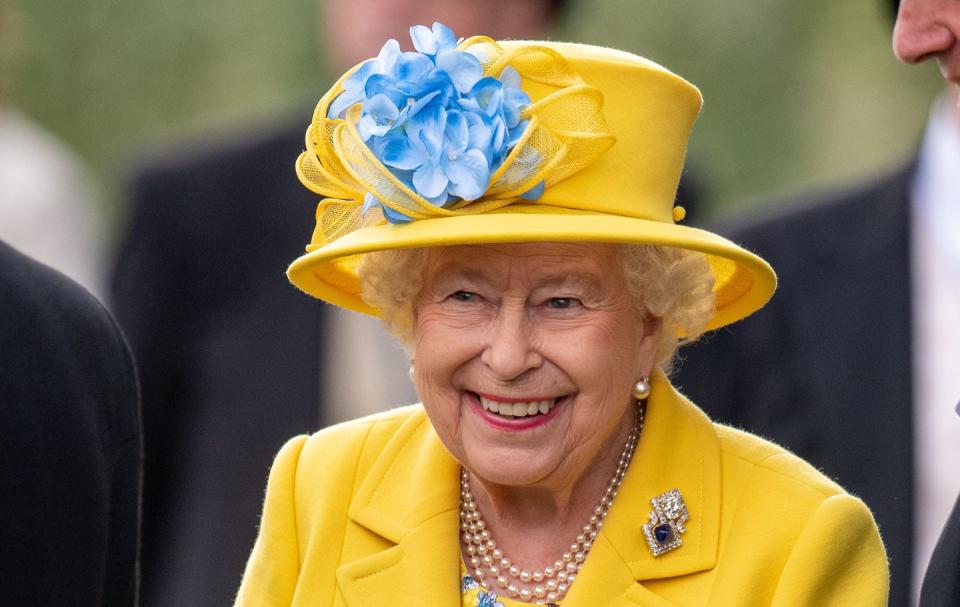
This is why one attends Royal Ascot: to witness firsthand the gravitas, the grandeur, the adulation and a bit of the isolation that accompanies what the current occupant of Buckingham Palace refers to, at times wearily, “this job for life.” It’s a thrilling and oddly moving thing to see. After all, who needs to binge watch The Crown when one can simply binge watch the Queen?
You Might Also Like

